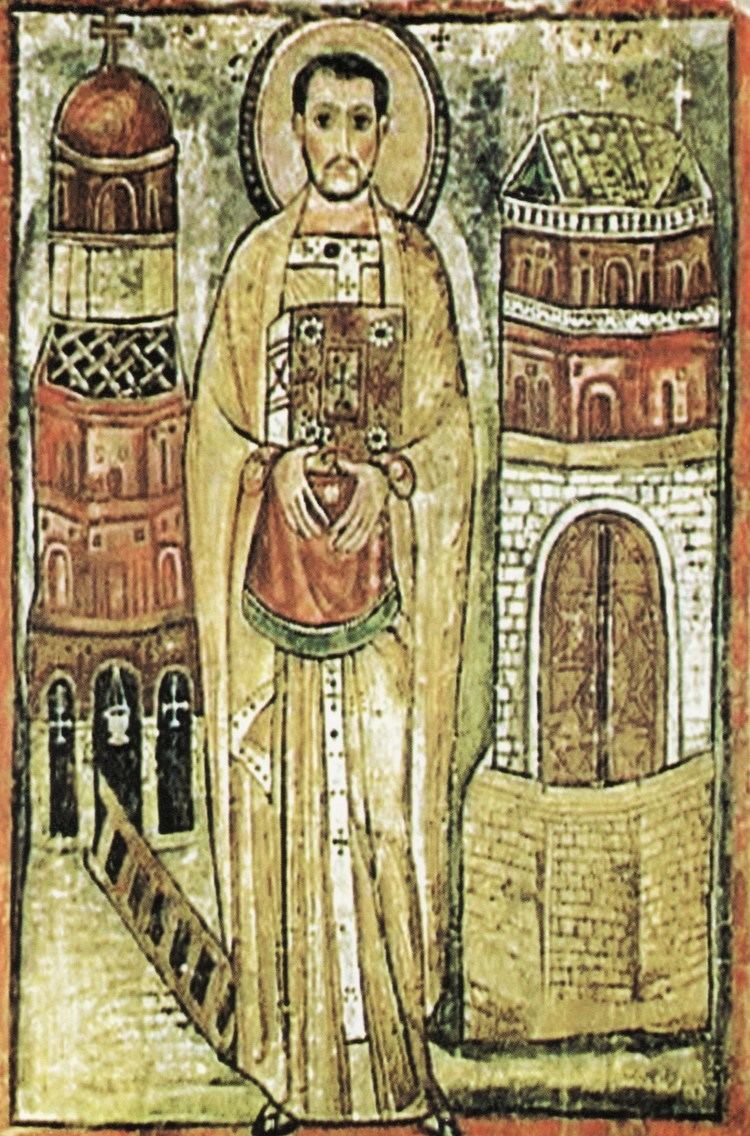Papacy began 26 June 576 Died June 25, 605 AD, Egypt Name Pope of | Nationality Syrian Papacy ended 25 June 605 Term ended June 25, 605 AD | |
 | ||
Buried Ennaton Monastery near Alexandria Denomination Coptic Orthodox Christian Feast day 25 June (18 Paoni in the Coptic Calendar) Residence Saint Mark's Coptic Orthodox Cathedral, Alexandria, Egypt Successor Pope Anastasius of Alexandria Predecessor Pope Peter IV of Alexandria Similar People Pope Dioscorus I of Alexan, Pope Peter I of Alexandria, Mark the Evangelist, Pierre Belon | ||
Pope Damian of Alexandria | Wikipedia audio article
Pope Damian of Alexandria, 35th Pope of Alexandria & Patriarch of the See of St. Mark.
Contents
Originally from Syria, where his brother was a prefect in Edessa, he became a monk in his early years and spent sixteen years in the Egyptian desert of Scete, where he was ordained a deacon in the monastery of St. John the Short. Afterward, he went to a monastery near Alexandria and continued to practice asceticism.
When Pope Peter IV of Alexandria was enthroned on the See of St. Mark, he made Damian a private secretary, during which Damian earned much esteem for his goodness. After Peter's death in 569, the bishops unanimously agreed to ordain him a patriarch. In addition to pastoring the church, he wrote many epistles and discourses, including a reaffirmation of the miaphysite and non-Chalcedonian views. He reigned for almost thirty-six years.
Controversies
While serving as Patriarch, Damian performed some controversial actions in trying to complete his predecessor's attempt to depose Patriarch Paul II of Antioch by traveling secretly to Antioch to install a replacement Patriarch. Although this action did not have the support of all the Syrian bishops, Damian had enough support to convene a meeting and choose a replacement. However, the Chalcedonian patriarch, probably Gregory of Antioch, discovered the plan and prevented it, forcing Damian and his colleagues to flee. Damian then went to Constantinople, where he consecrated some bishops and took part in a church council, which he later repudiated.
The Synaxarium entry for Damian recounts the following two theological controversies in which he was involved:
Damian was very active in fighting views that he considered heretical, including not only tritheism, but also the Chalcedonians, Pope Leo's Tome, Bishop Julian of Halicarnassus, the Agnoetae, the Meletians, the Acephali, the Gaianites (supporters of a rival to Theodosius I), Stephen of Alexandria and Paul of Beth Ukame. Although most of Damian's writings are lost, he did influence many writers in his own time, such as John of Parallos, who, like Damian, focused on combating heresy.
